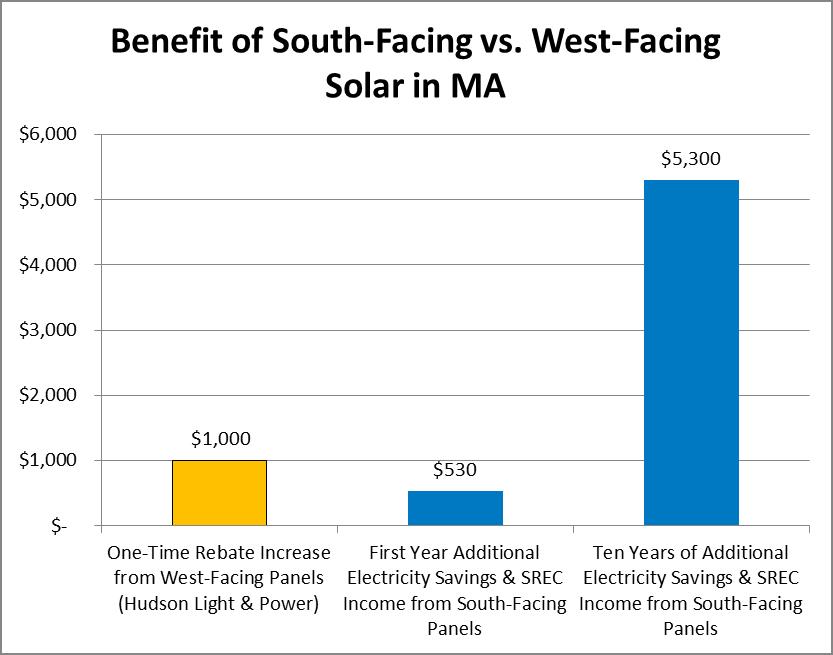I’ve always told customers due south is the best orientation for solar electric (PV) panels. So why does a recent New York Times article say west is best?
The article doesn’t actually say west is best for solar owners, but it’s implied by the headline, and in today’s 140-character world, too many of us don’t read past the headline. Allow me to relay what the article does say, while throwing in my two cents.
In North America, south-facing panels are best. They maximize your system’s production because we’re in the Northern Hemisphere and the sun is always to our south. That’s a fact. (Yes, you can install trackers so your panels follow the sun to get even more production but, as the reporter says, they’re really expensive. They also introduce moving parts to a system whose beauty lies partly in its simplicity and miniscule margin for mechanical error.)
The article confirms south is best: “[A south-facing system] captures the most solar energy over the course of the day, which benefits the homeowner”. West-facing panels capture more afternoon sun, but less sun overall. Who benefits from that? The utility, because electricity is most expensive later in the day when power demand peaks.
(“Peak” varies by season and geography, but generally, peak is late afternoon/early evening when businesses crank up air conditioning as the day’s heat crescendos, and people arrive home from work and start dinner or watch TV.)
In the course of running this company and helping 450 people benefit from solar, I’ve yet to see someone put solar on a roof to help their utility. In fact, most take pleasure in “sticking it to the utility” by decreasing their dependence on their local monopoly.
In our last customer survey, people said they put solar on their homes and businesses to reduce their electric bills and help the planet. Some also wanted to reduce our country’s reliance on imported and fossil fuels. But helping government-regulated utilities be more profitable? Funny, that one never came up…
Some utilities are acting on solar’s potential to help meet peak demand. Hudson Light & Power right here in our town has a rebate that favors west-facing systems. A customer of ours served by HL&P asked about facing his ground-mounted solar system west to get an additional $1,000 on his HL&P rebate.
I calculated his production with west-facing vs. south-facing panels. Orienting his panels to the west would have sacrificed $200 in annual electricity savings, plus $330 in annual SREC income for 10 years. Not surprisingly, he opted for south-facing panels and $5,300 in his pocket over 10 years, instead of the one-time, $1,000 bump in his rebate. (Factor in inflation and that $5,300 becomes even more, and don’t forget his electricity savings carry on for the life of the system.)
Until more utilities improve incentives for west-facing panels, like rebates or time-of-use rates that reward people for generating power during peak, south is going to remain the best economic option for solar owners.
If you liked this article, you might also enjoy:
- STC vs. PTC: Why Solar Panel Testing Matters
- Tree Math 2: Solar vs. Trees, What’s the Carbon Trade-off?
- What’s in a Solar Production Estimate?






2 Responses to “Challenging the New York Times: Why Solar Panels Should Face South, Not West”
It is the luck of the draw. You are usually stuck with the direction your roof faces and have not much choice. Mine happens to be southwest. But if
you have the luxury of a ground mounted array you could have the best of both worlds with a TRACKING array on a motor drive so it follows the sun. Has anyone done this and how does it compare to a fixed direction?
You’re right, it’s not like most people have a choice about their panel orientation! As for tracking comparisons, I may have to do some analysis and a post on that in the future. Thanks for the idea.
The comments are closed.